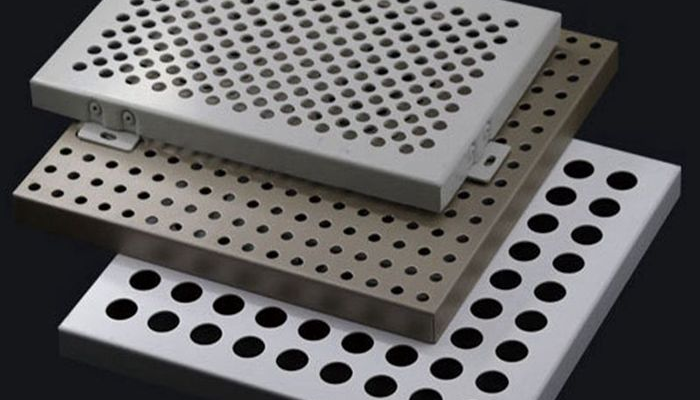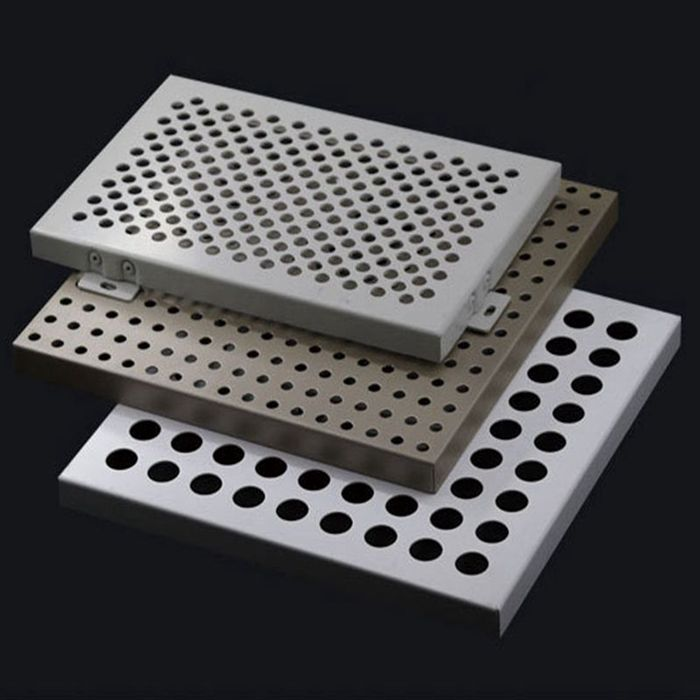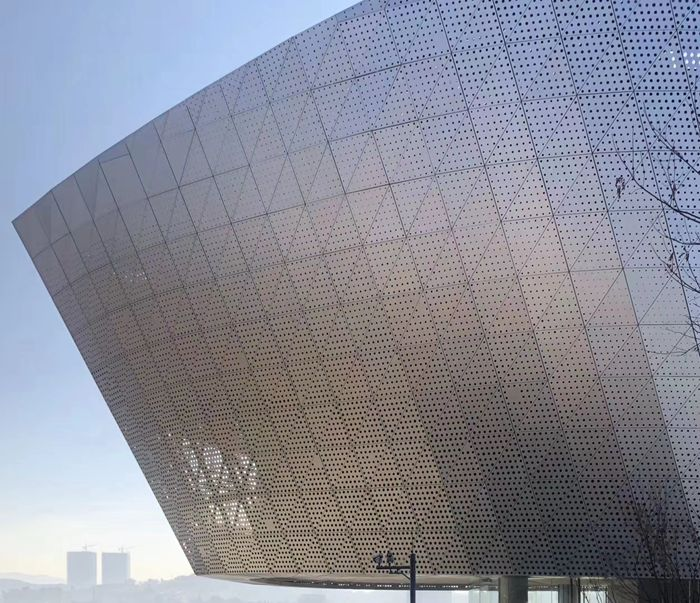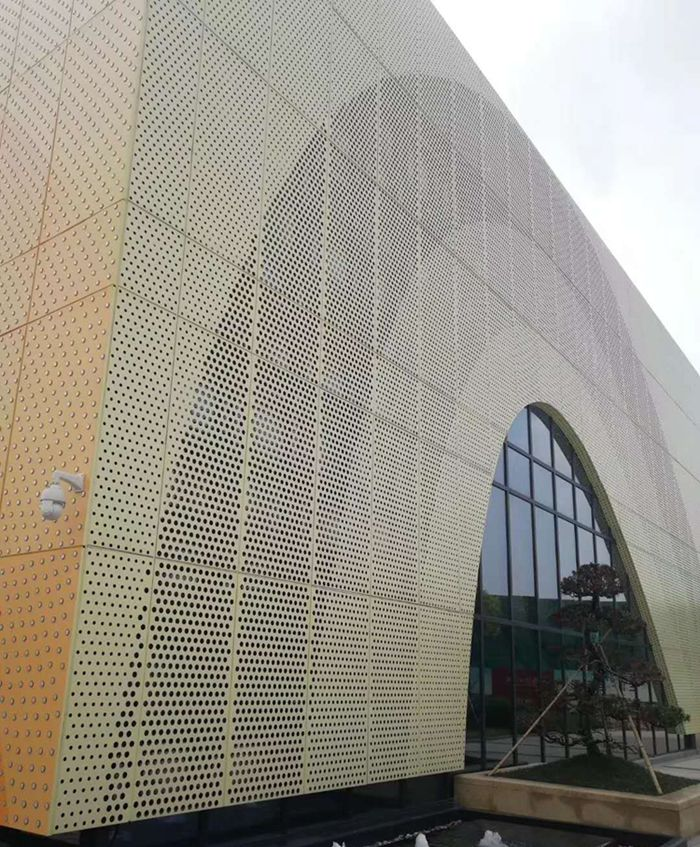
In recent years, perforated aluminum panels have also gradually entered the field of sun shading. Although these perforated aluminum metal panels are not able to achieve the same accurate temperature control effect as dense louvers, they can also play a moderate role in shading and bring a more hazy, soft, translucent visual effect. These materials are often sandwiched between double glazing and glass to form a complete building skin.

Perforated aluminum panels made of sunshades not only break the monotonous composition of the glass curtain wall, bringing obvious contrast in shape, color and quality, but also with rhythmic slightly curved surface dividing lines and glass flat division to form a contrast, largely softening the cold and hard feeling of glass.

Sun shading is a method of building energy saving, by actively blocking and reflecting the high temperature sun rays and reducing the heat entering the room to reduce the heat load of the room, so as to achieve the purpose of energy saving. Perforated aluminum panels have been chosen as shading materials for use long ago because of their light weight, high strength and glossy reflective properties. With the innovation of materials and the advancement of technology and design, perforated aluminum panels have made great progress in the field of architectural shading: not only have more scientific shading methods, but also more artistic expressions, which make perforated aluminum panels realize the purpose of shading and combine with the design and construction of the building skin, and become the decorative components of the building skin.

The emergence of perforated aluminum panels has opened up a wider development space for metal in the road of sun shading and decoration integration. The translucent metal perforated panels have the property of filtering natural elements such as sunlight, wind and rain, and this filtering does not block the circulation of indoor and outdoor air and the permeability of the view. Since metal panels with holes or openwork patterns cannot form an airtight barrier on their own, they are often used in combination with other materials to form the more popular multi-layer building skins. Instead of being bulky due to the increased thickness, multi-layered architectural skins are lighter due to the increased layers and shifting light and shadow.
The use of perforated aluminum panels gives the building an amorous and versatile appearance. Under the strong daylight, the perforated aluminum panels become a bronze mirror to softly reflect the external light, visually presenting a dense and opaque side, when the strong outdoor light becomes the embellishment of the interior space, the small and dense pores are clearly outlined when the perforated skin is observed from inside. When the night comes, the light inside the building diffuses through the perforated skin, showing the more transparent and thin side of the skin, like a light and transparent veil on the skeleton of the building, and the contrast between transparent and opaque, wide and narrow is also shown. The whole venue is transformed into a swaying and hazy luminous body in the dark night, becoming a work of art that lights up and decorates the surrounding environment in the dark night.
Leave a Reply